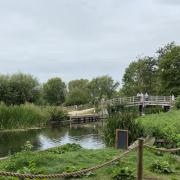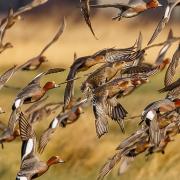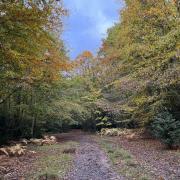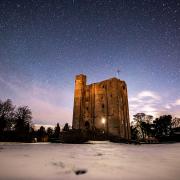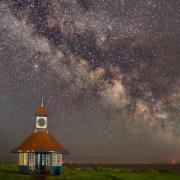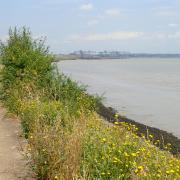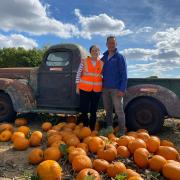An excited chattering call fills the air along areas of the Essex coastline. A small white bird with a light grey back zooms through the sky, carrying in its yellow beak with black tip a Sandeel for an expectant chick. This is a Little Tern, the smallest of the tern species that come to the UK to breed. They arrive here from their wintering grounds in Africa and choose suitable sandy and shingle beaches to start a family, with one such area being Horsey Island.
Essex's Horsey Island has become a haven for this threatened seabird. In 2023 a total of 28 pairs of Little Terns successfully raised 42 chicks during the breeding season, which was the highest number at the site for 17 years.
This success comes following the completion of a large-scale restoration project here, which has created new habitats for terns to breed. The RSPB, in partnership with the Statutory Harbour Authority Harwich Haven Authority and the Environment Agency, completed a ‘beneficial reuse’ scheme on the island. Dredged offshore materials of sand and shingle were used from a major channel deepening project, carried out by Harwich Haven Authority, to create new island habitats for breeding birds. This scheme was part of the EU funded LIFE on the Edge project, with further funding from the Harwich Haven Authority and the Environment Agency.
Nesting on beaches, Little Terns are highly vulnerable to disturbance and erosion exacerbated by rising sea-levels throughout their breeding grounds. The project at Horsey Island, raised the height of a shingle beach out of the reach of the highest tides. This provided safe nesting habitat for this species to breed. The island location also means that the breeding site is relatively free of disturbance from people and predators.
Kieran Alexander, RSPB site manager for Old Hall Marshes in Essex, commented: 'It was heart-warming to see so many young Little Terns fledge from Horsey Island last year. It really is a testament to the project which has raised the land-level of the tern’s breeding sites, keeping the nests safe from the sea. This adjustment to the island will help secure the future of the most important Little Tern colony in Essex.'

Along with providing breeding sites for this threatened seabird, the recharge scheme will also help to reduce erosion of the saltmarsh over time. This protected habitat, is vital for carbon storage, aiding in the fight against climate change. It’s also an area that forms part of England’s east coast wetlands, which have been added to the UK’s Tentative List of World Heritage sites because of their incredible importance for nature. The project also assists in providing a natural wave break for the wider Hamford Water area, absorbing the energy before the waves reach the mainland.
By conservation organisations, industry and regulators working together, dredged sediment, which is often disposed of out at sea, can be used positively to help nature conservation. Marcus Pearson, Interim ESG Director for Harwich Haven Authority, said: 'We were excited to see that the recharge project on Horsey Island has been such a success, which can be demonstrated by the increase in nesting Little Tern pairs that were recorded in 2023.'
Thanks to this recharge project Little Terns are now thriving on Horsey Island, and the colony is being closely monitored this year too.
Horsey Island is privately owned and the landowners in partnership with Tendring District Council and the RSPB manage the beach for wildlife conservation. The island is not accessible itself, but you can view its fascinating wildlife via nearby public footpaths. You can also discover RSPB reserves to see Little Terns and other seabirds at rspb.org.uk and find out more about the LIFE on the Edge project at projectLOTE.life




